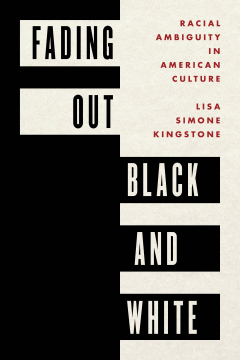
Additional Information
Book Details
Abstract
What happens to a country that was built on race when the boundaries of black and white have started to fade? Not only is the literal face of America changing where white will no longer be the majority, but the belief in the firmness of these categories and the boundaries that have been drawn is also disintegrating.
In a nuanced reading of culture in a post Obama America, this book asks what will become of the racial categories of black and white in an increasingly multi-ethnic, racially ambiguous, and culturally fluid country. Through readings of sites of cultural friction such as the media frenzy around ‘transracial’ Rachel Dolezal, the new popularity of racially ambiguous dolls, and the confusion over Obama’s race, Fading Out Black and White explores the contemporary construction of race.
This insightful, provocative glimpse at identity formation in the US reviews the new frontier of race and looks back at the archaism of the one-drop rule that is unique to America.
Beautifully written, compellingly argued, and exceptionally well-structured. Kingstone frames her richly illuminating, vital and groundbreaking questions in wonderfully theoretically incisive ways by asking, “what do our reactions and changing representations of black and white say about either our shifting perceptions or the firmness of racial categories?”
Celeste-Marie Bernier, Personal Chair in English Literature and Professor of Black Studies at the University of Edinburgh
Cultural narratives around the black/white binary in America are changing. Lisa Kingstone takes different kinds of representation, including the response to Rachel Dolezal’s racial construction, to explore the tensions between persistent essentialism and notions of emerging racial fluidity. To this complex territory, she brings analytical acuity and insight in this highly readable and beautifully written book. It will be widely read.
Peter J. Aspinall, Emeritus Reader in Population Health Centre for Health Services Studies, University of Kent
Mapping and re-mapping the cultural geography of race and identity are some of the critical, yet most complex endeavors of our time. Kingstone gives us the tools to navigate this thorny area across both recent history and contemporary culture. It is a forensically crafted masterclass of clarity - essential reading for anyone who is as confused as I am.
Dr. Gus Casely-Hayford, OBE, Historian and Curator
Lisa Simone Kingstone is Senior Teaching Fellow in the Department of International Development at King’s College London. She has a BA from Barnard College, an MA from Columbia University, and a PhD from the University of Massachusetts at Amherst in English Literature. Before coming to King’s, she taught English Literature at the University of Connecticiut and worked as a professional journalist. Her work has appeared in a variety of publications.
Lisa Kingstone’s book challenges people on both sides who are entrenched and invested in the traditional binary of race. She unpacks the concept and explores the exemplars of the moment – Rachel Dolezal and President Obama – and ongoing cultural targets of analysis like children’s dolls and popular media. In her original research using focus groups, she helps us see cracks in the system and how far we have to go if we have any hope to unleash human richness, complexity, and ambiguity beyond binary.
Anita Foeman, Founder and Primary Investigator of the DNA Discussion Project and Professor of Communication Studies, West Chester University
Table of Contents
| Section Title | Page | Action | Price |
|---|---|---|---|
| Cover | Cover | ||
| Half Title | i | ||
| Title Page | iii | ||
| Copyright Page | iv | ||
| Dedication | v | ||
| Contents | vii | ||
| List of Figures | ix | ||
| Acknowledgments | xi | ||
| Introduction | 1 | ||
| 1 Tracing Race | 21 | ||
| 2 The Trial of Rachel Dolezal | 37 | ||
| 3 Obama as Racial Rorschach | 59 | ||
| 4 Casting Color | 81 | ||
| 5 Really Black | 107 | ||
| 6 Talking About Race | 137 | ||
| Coda | 165 | ||
| Appendix 1 Demographic Information Form | 169 | ||
| Appendix 2 Flyer for Focus Groups | 171 | ||
| Bibliography | 173 | ||
| Index | 195 | ||
| About the Author | 207 |
